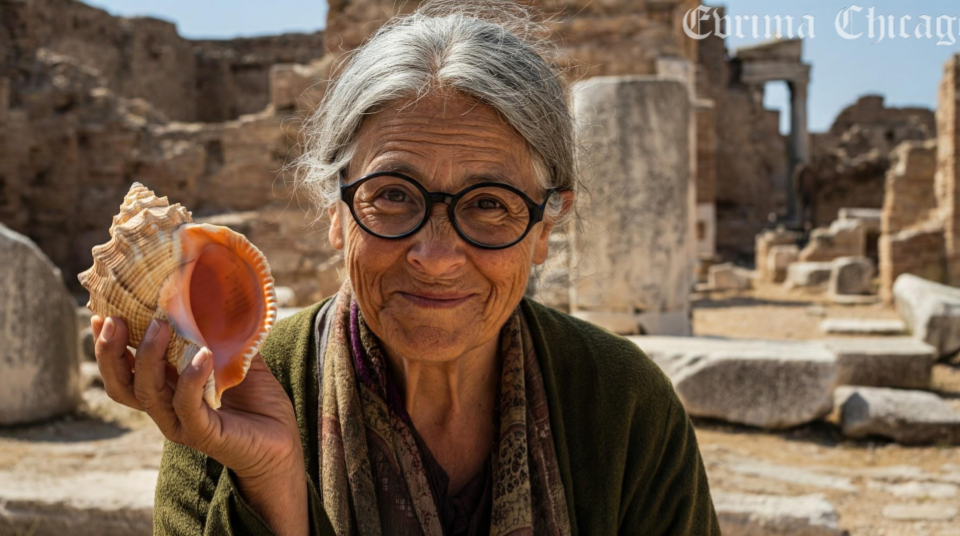For generations, the playful tongue twister “She sells seashells by the seashore” has rolled off tongues, entertaining children and challenging even the most adept speakers. What many don’t realize, however, is that this catchy rhyme may be more than a linguistic exercise—it could be a nod to one of history’s most fascinating yet underappreciated archaeologists: Mary Anning. Her pioneering discoveries along England’s Jurassic Coast redefined the field of paleontology, laying the groundwork for our understanding of prehistoric life.
Who Was Mary Anning?
Born in Lyme Regis, England, in 1799, Mary Anning was no ordinary child. The daughter of a cabinetmaker, she grew up along the rugged shores of Dorset, an area rich in fossils. Her family was poor, and to make ends meet, young Mary and her brother Joseph would scour the cliffs for “curiosities”—fossils that they would sell to tourists and collectors. The family’s fossil-hunting efforts provided them with a modest income, but for Mary, the activity would become a lifelong passion and scientific pursuit.
Though she had little formal education, Anning’s sharp mind and meticulous observations made her a formidable figure in the burgeoning field of paleontology. Her discoveries were not only groundbreaking but also instrumental in shaping the scientific debates of her time.
A Groundbreaking Discovery
In 1811, at just 12 years old, Mary and her brother unearthed their first major find: the fossilized skull of an ichthyosaur, a marine reptile that lived during the Jurassic period. Over the following months, Mary painstakingly excavated the creature’s entire skeleton—a feat that would solidify her reputation among scientists.
The ichthyosaur was unlike anything the scientific community had ever seen. Its discovery ignited debates about the history of life on Earth and the possibility of extinction, a controversial idea at the time. Mary’s find provided tangible evidence of prehistoric life, challenging long-held beliefs and fueling the nascent field of geology.
Shedding Light on Prehistory
Over her lifetime, Mary Anning uncovered numerous fossils that rewrote the story of Earth’s past. Among her most significant discoveries were the first complete Plesiosaurus skeleton in 1823 and the first British Pterosaur fossil in 1828. These finds were not only scientifically valuable but also visually stunning, capturing the imagination of the public and the scientific elite.
Despite her contributions, Anning often received little recognition during her lifetime. Women were barred from scientific societies, and her discoveries were frequently published under the names of male scientists. Yet, Anning persisted, driven by a love of discovery and a belief in the importance of her work.
A Legacy of Resilience
Mary Anning’s life was not without challenges. Lyme Regis was a treacherous environment for fossil hunting; landslides and storms made the cliffs dangerous, and her work required physical strength and endurance. Additionally, as a working-class woman in 19th-century England, she faced significant societal barriers. Scientists and collectors often sought her expertise, yet she was excluded from formal scientific circles and rarely received credit for her contributions.
Despite these obstacles, Anning’s work gained the admiration of notable geologists and paleontologists of her time. She corresponded with scientists such as Henry De la Beche and William Buckland, who relied on her expertise and insights. Her meticulous documentation and preparation of fossils set a standard for scientific rigor, influencing generations of researchers.
The Sea Shell Connection
The famous tongue twister:
“She sells seashells by the sea shore”
was popularized in the 20th century, but many believe it was inspired by Mary Anning’s life and work. While there’s no definitive proof linking Anning to the rhyme, the parallels are striking. She did, after all, spend her days collecting and selling fossilized shells and other curiosities by the shores of Lyme Regis.
The rhyme’s origins may be less important than the message it conveys: a celebration of curiosity, perseverance, and the treasures hidden in plain sight.
Recognition at Last
In recent years, Mary Anning’s legacy has finally begun to receive the recognition it deserves. Her life and work have been the subject of books, documentaries, and even a feature film, Ammonite (2020), starring Kate Winslet. Museums and institutions have honored her contributions, and her name is now synonymous with the field of paleontology.
Anning’s story also serves as a reminder of the many overlooked figures in history—particularly women and working-class individuals—whose contributions have shaped our understanding of the world.
The Impact of Anning’s Work
Mary Anning’s discoveries had a profound impact on both science and society. They challenged prevailing notions about the age of the Earth and the history of life, paving the way for Charles Darwin’s theory of evolution. Her work also demonstrated the value of meticulous observation and fieldwork, principles that remain central to scientific inquiry today.
Perhaps most importantly, Anning’s story continues to inspire. Her determination and passion remind us that anyone, regardless of background or circumstance, can make meaningful contributions to science and humanity.
A Symbol of Curiosity
Mary Anning’s legacy is not just about the fossils she discovered—it’s about the spirit of curiosity and resilience she embodied. Her story is a testament to the power of pursuing one’s passions, even in the face of adversity. In many ways, she represents the essence of scientific discovery: a relentless drive to uncover the truths hidden beneath the surface.
Today, the shores of Lyme Regis remain a destination for fossil hunters and enthusiasts, a living tribute to the woman who first unlocked their secrets. And while she may not have sold seashells in the traditional sense, Mary Anning’s contributions have left an indelible mark on the sands of history.
Conclusion
Mary Anning’s life is a tale of perseverance, discovery, and the quest for knowledge. From the humble shores of Lyme Regis to the annals of scientific history, her journey is one of triumph against the odds. The next time you recite the tongue twister, “She sells seashells by the seashore,” remember the woman who may have inspired it—a true pioneer whose legacy continues to shape our understanding of the natural world.
Written & Published by Team Editorial, Evrima Chicago
[email protected]
Send tips to [email protected]




